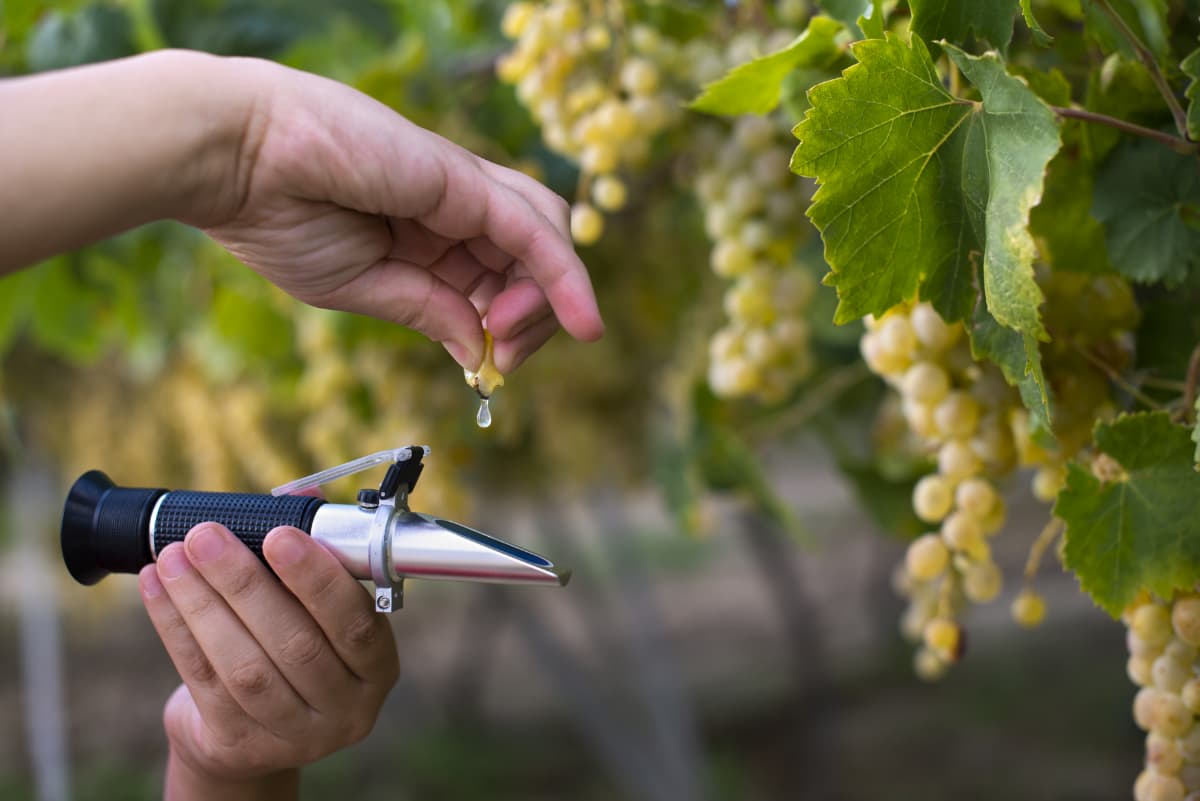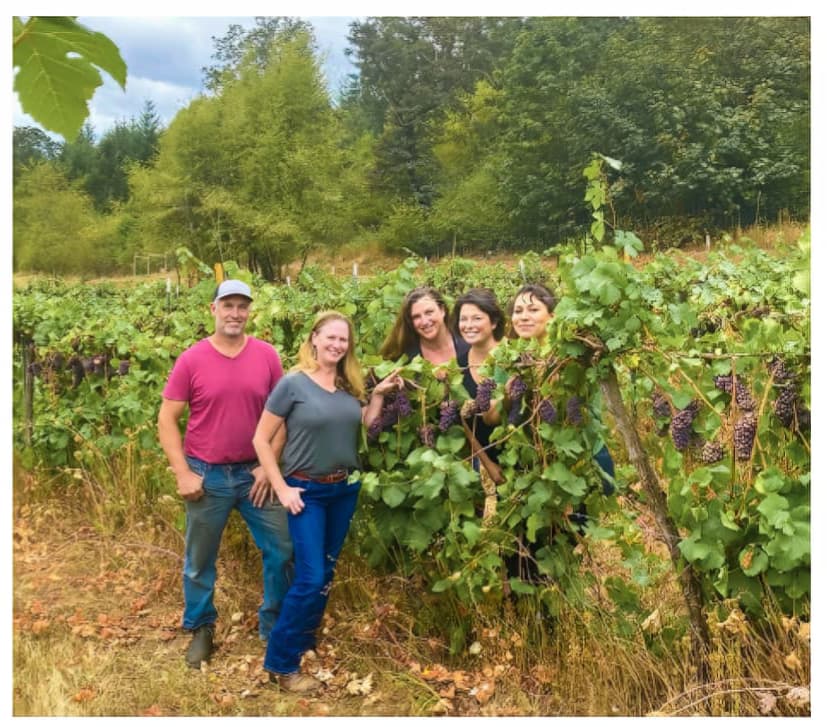Happy fall! September 23rd marked the autumnal equinox and harvest time in the vineyards is just beginning. The lambs born in March have helped us at the Compton Family farm and vineyard by “pruning” (eating) the lower leaves shading the grapes on the vines.
We would do this by hand without their help. Fortunately, they are still small enough to walk beneath the rows without disturbing the vines. The lambs love eating the leaves but don’t care for the grapes – and they fertilize naturally as they munch. Our Maremma puppies are growing up fast and the two we kept with us are learning to protect the flock and our farm, just like their parents.
How do we know when to harvest our grapes? Skin color is a nice visual marker to start testing fruit in the vineyard. To determine ripeness we assess the skins, taste, seed color, pH, acids, and sugar levels (Brix).
The Brix scale is a measurement of sugar in grapes used to determine the potential alcohol level when made into wine. In the vineyard we use a device called a refractometer (photo above) that uses a prism to measure the amount of dissolved sugar in the liquid of a crushed grape. During fermentation, the yeast will metabolize the sugar and produce alcohol. Science is cool!


Compton staff Matt Compton (winemaker & grower), Tabitha Compton, Angela, Amoris, & Melissa


